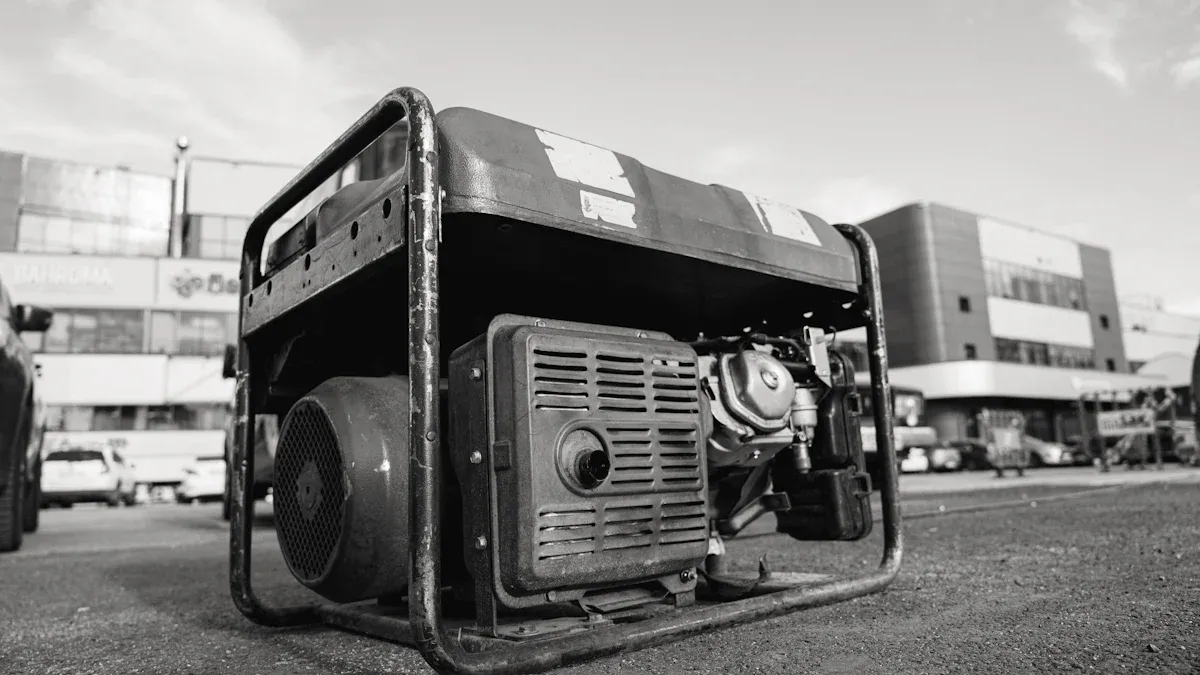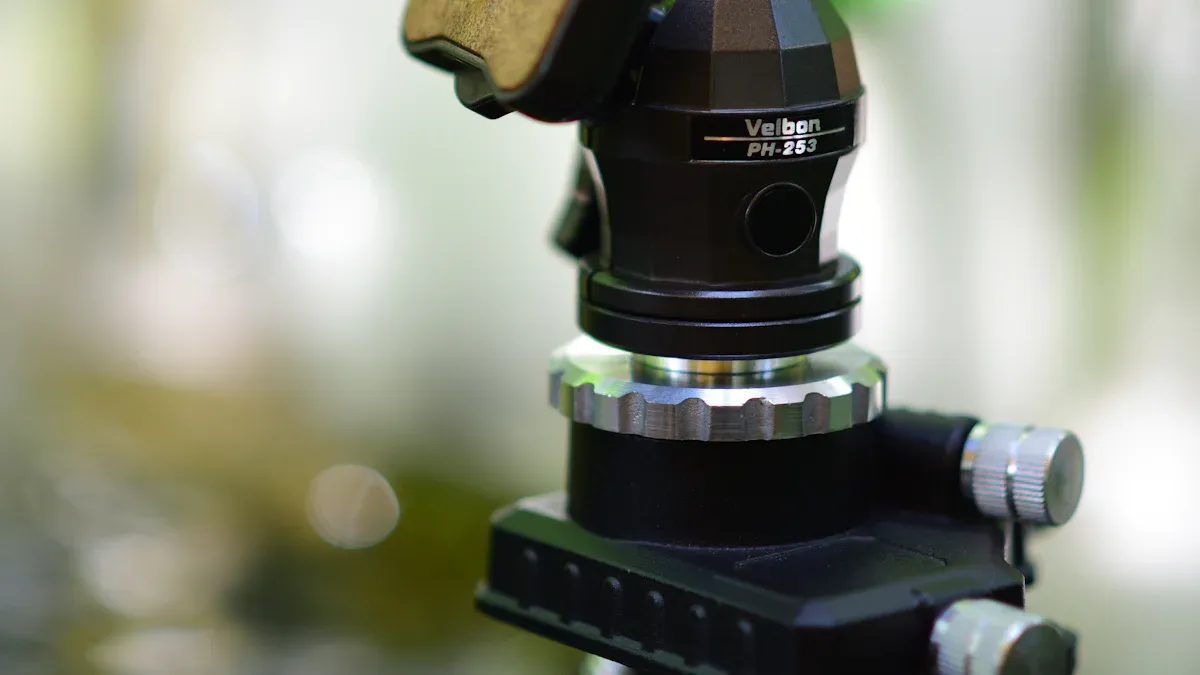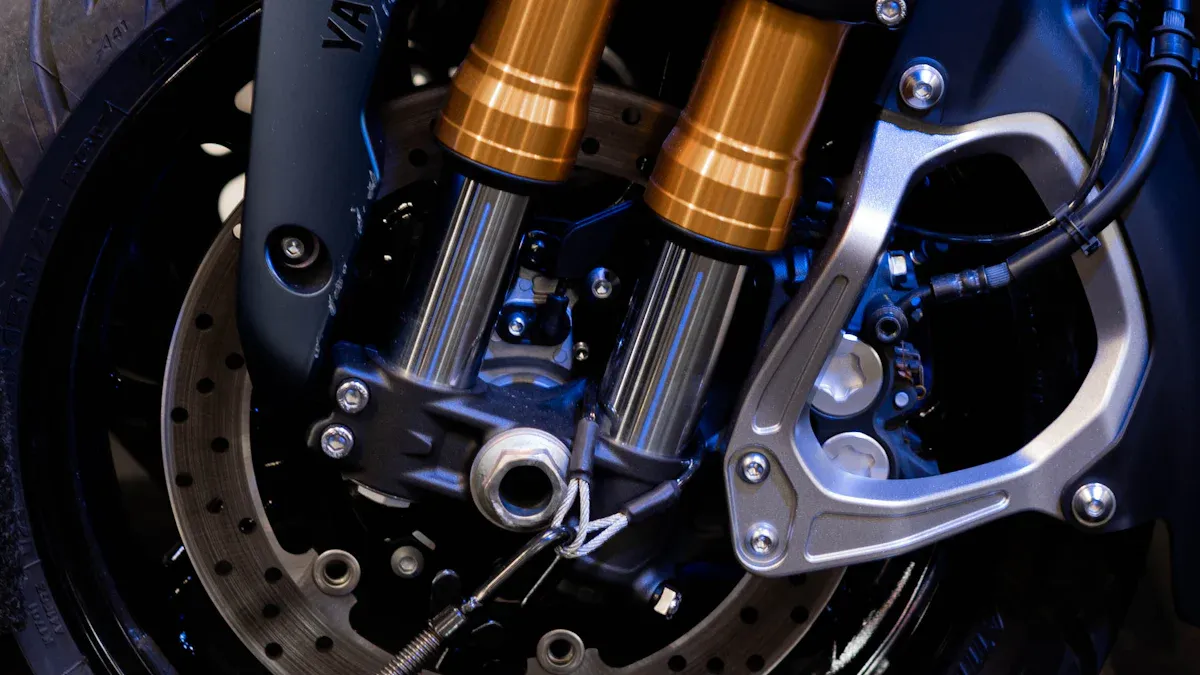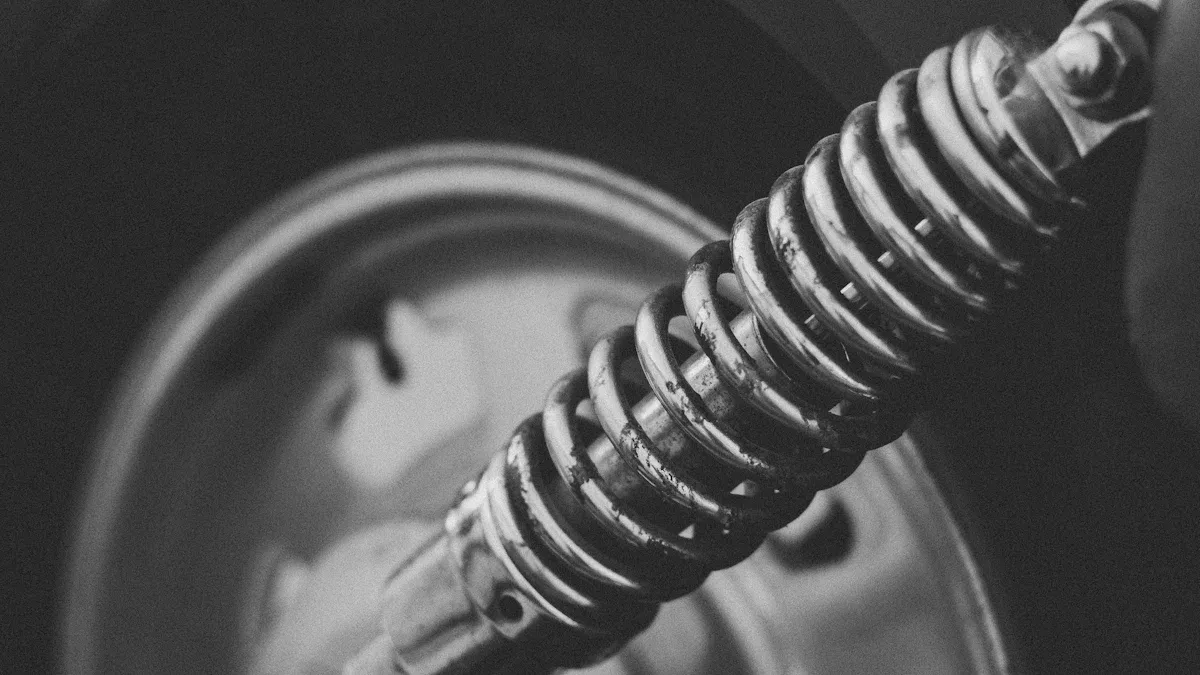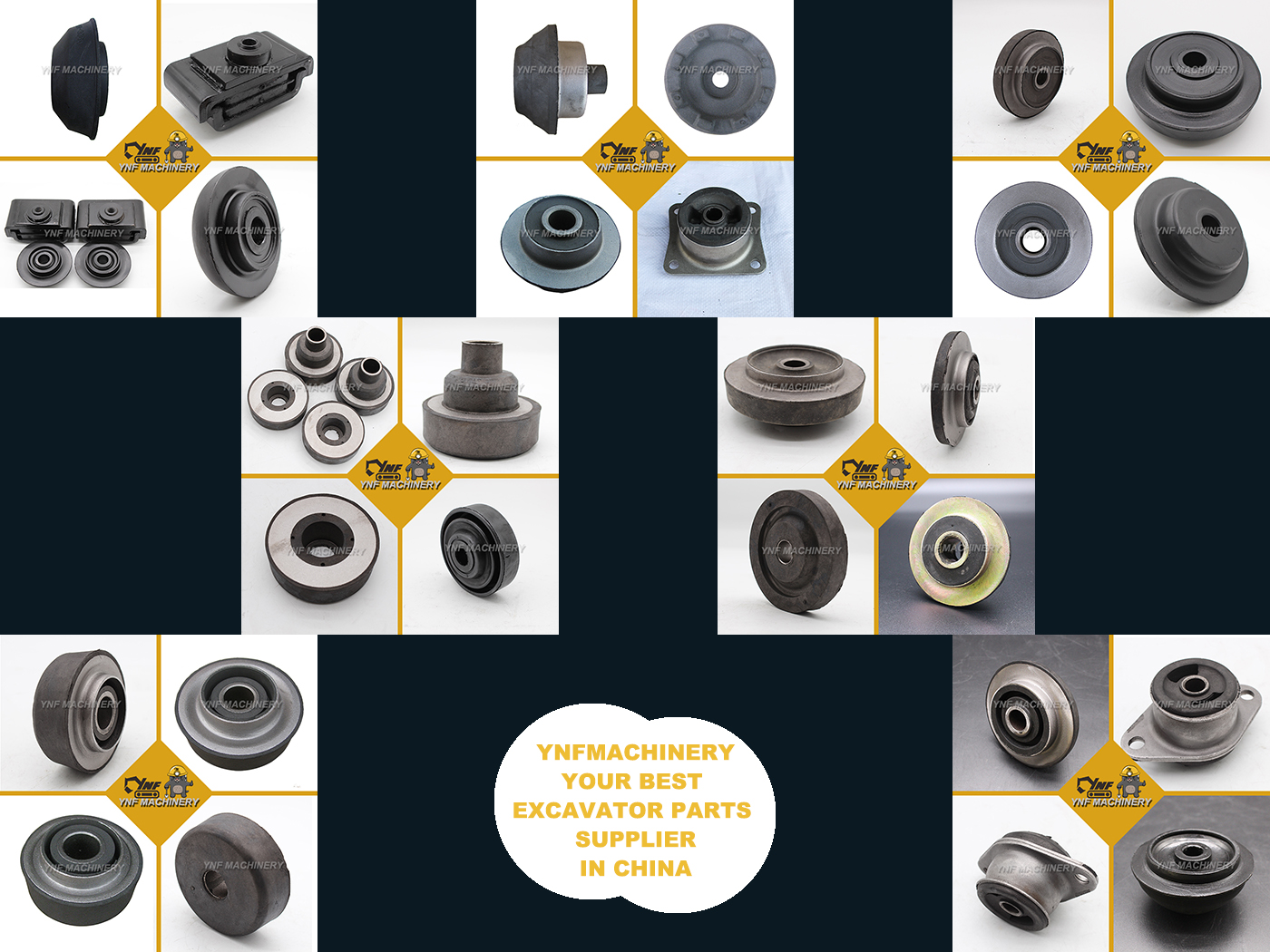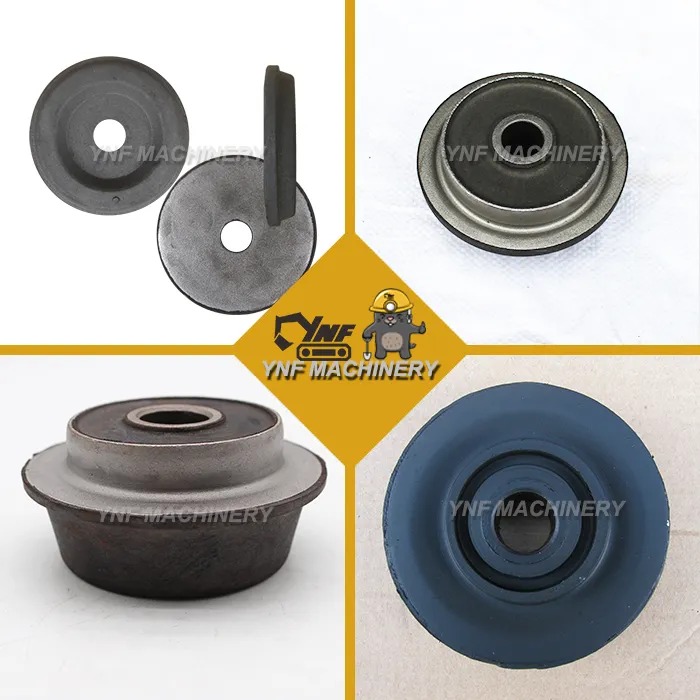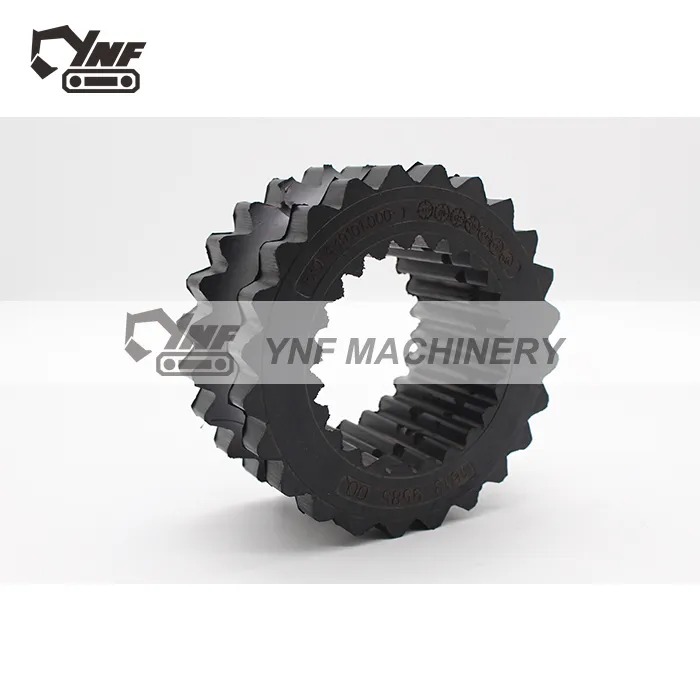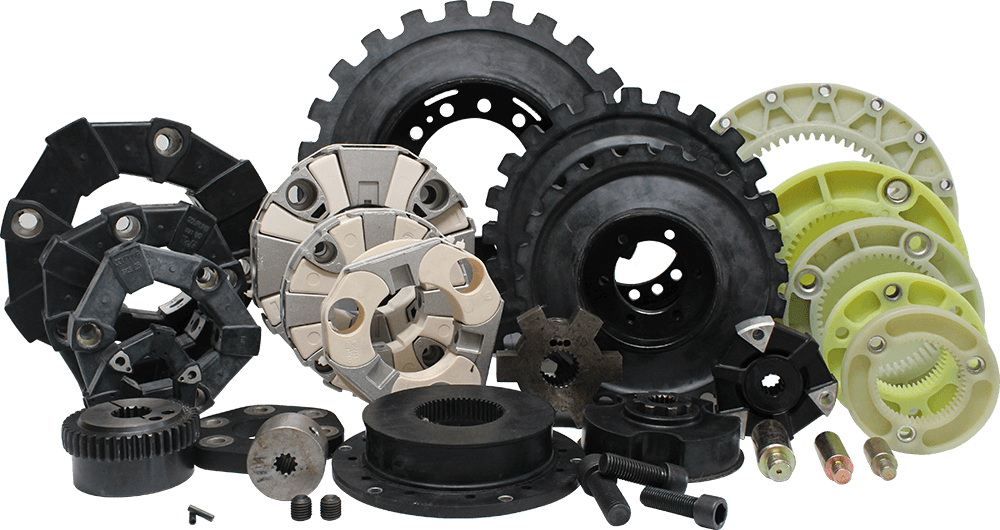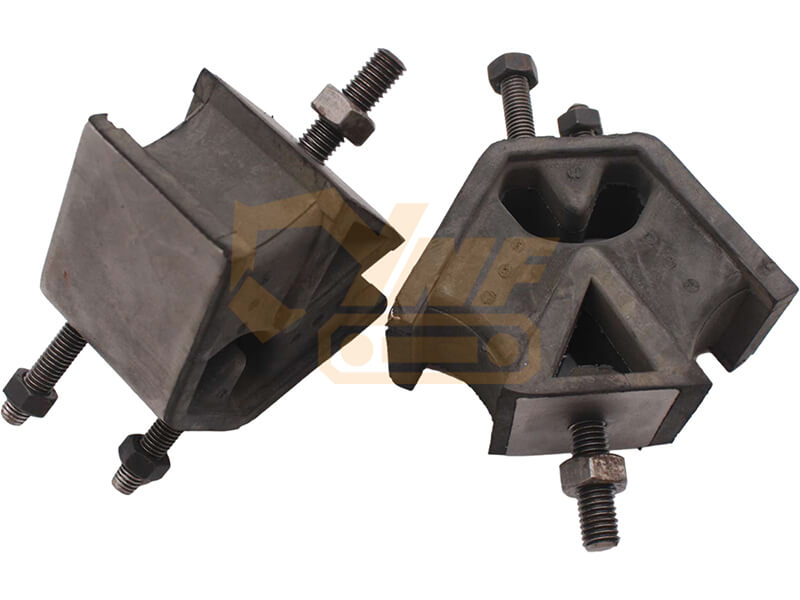
Choosing the right rubber mounts can make a world of difference for your equipment. These mounts don’t just reduce vibrations; they protect your machinery from wear and tear, ensuring it runs smoothly and lasts longer. Ignoring this choice could lead to unstable operations or even safety risks. You need to think about factors like load capacity, vibration levels, and environmental conditions. By making an informed decision, you’ll enjoy benefits like improved efficiency, reduced maintenance costs, and safer equipment performance.
Key Takeaways
- Assess your equipment’s specific needs by calculating load requirements to ensure the rubber mounts can handle the weight safely.
- Evaluate the vibration characteristics of your machinery to select mounts that effectively absorb and isolate vibrations.
- Consider environmental factors such as temperature and exposure to chemicals when choosing the material for your rubber mounts.
- Follow a structured selection process: calculate load capacity, match vibration frequency, and align mount type with application needs.
- Perform regular maintenance checks on rubber mounts to identify wear and ensure optimal performance, preventing costly repairs.
- Avoid common mistakes by thoroughly understanding load and vibration requirements, as well as the environmental conditions affecting the mounts.
Assessing Equipment Needs for Rubber Mounts
When choosing rubber mounts, understanding your equipment’s specific needs is the first step. Every machine has unique requirements, and selecting the wrong mount can lead to poor performance or even damage. Let’s break down the key factors you need to evaluate.
Determining Load Requirements
Start by figuring out how much weight your equipment will place on the mounts. This is crucial because every rubber mount has a specific load capacity. If the mount can’t handle the weight, it may fail, causing instability or excessive wear.
To calculate the load, divide the total weight of your equipment by the number of mounts you plan to use. For example, if your machine weighs 1,000 pounds and you’re using four mounts, each mount should support at least 250 pounds. Always choose mounts with a load rating slightly higher than your calculated requirement. This ensures safety and accounts for any unexpected stress.
Pro Tip: Rubber mounts with a higher load capacity often have a harder material composition. While they can handle more weight, they may offer less vibration dampening. Balance these factors based on your equipment’s needs.
Evaluating Vibration Characteristics
Next, consider the type and intensity of vibrations your equipment produces. Machines with high-frequency vibrations require mounts that can absorb and isolate those movements effectively. The hardness, or durometer, of the rubber plays a big role here. Softer rubber absorbs more vibration but may not handle heavy loads as well. On the other hand, harder rubber provides better support but less vibration isolation.
The height and design of the mount also matter. Taller mounts with more rubber material can absorb more vibration, but they may struggle with sudden impact loads. Think about the nature of your equipment’s operation. Is it running continuously, or does it experience occasional shocks? Match the mount’s vibration isolation properties to your machine’s behavior.
Considering Environmental and Space Constraints
Finally, take a close look at the environment where your equipment operates. Temperature, moisture, and exposure to chemicals can all affect the performance of rubber mounts. For instance, natural rubber works well in moderate conditions but may degrade in extreme heat or when exposed to oils. Synthetic materials like neoprene or silicone might be better for harsh environments.
Space constraints are another important factor. Measure the available area for the mounts and ensure they fit without interfering with other components. Compact mounts are ideal for tight spaces, but they should still meet your load and vibration requirements.
Quick Reminder: Always check the mount’s dimensions and material compatibility with your equipment’s operating conditions. This small step can save you from costly replacements later.
By carefully assessing these three factors—load requirements, vibration characteristics, and environmental constraints—you’ll be well on your way to selecting the perfect rubber mounts for your equipment.
Exploring Types and Materials of Rubber Mounts
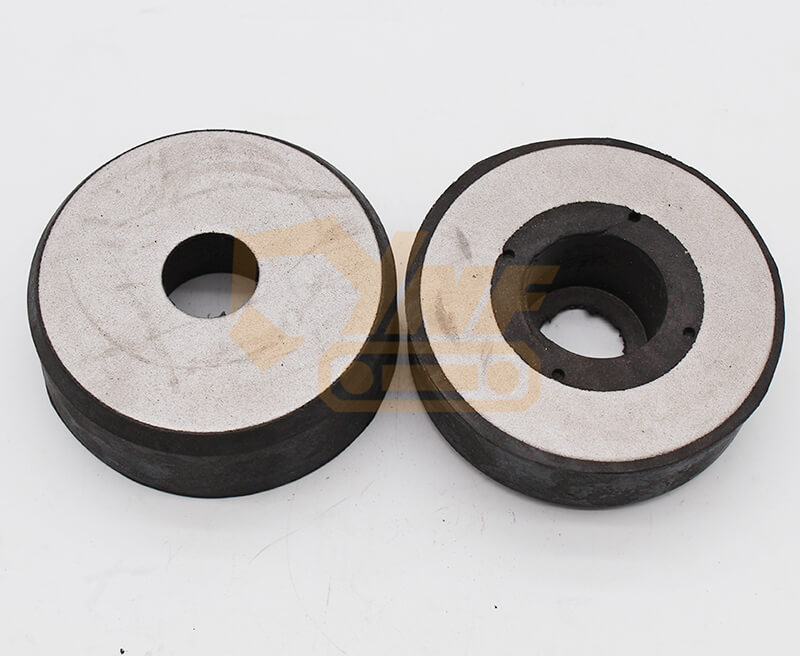
When it comes to choosing the right rubber mounts, understanding the available types and materials is essential. Each type serves a specific purpose, and the material composition directly impacts performance. Let’s dive into the most common options and how they compare.
Common Types of Rubber Mounts
Rubber mounts come in various designs, each tailored to specific applications. Here are some of the most widely used types:
- Cylindrical Mounts: These are versatile and commonly used for general vibration isolation. They work well in applications like HVAC systems, compressors, and small machinery.
- Conical Mounts: Known for their ability to handle both compression and shear forces, these mounts are ideal for heavy-duty equipment like generators and motors.
- Sandwich Mounts: These feature layers of rubber bonded between metal plates. They provide excellent shock absorption and are often used in industrial machinery.
- Bushing Mounts: These mounts are perfect for applications requiring rotational movement, such as automotive suspension systems.
- Shear Mounts: Designed to absorb horizontal forces, these mounts are great for equipment that experiences lateral vibrations.
Each type offers unique benefits, so you’ll want to match the mount design to your equipment’s specific needs. For example, cylindrical mounts are a go-to choice for general-purpose use, while conical mounts excel in high-load scenarios.
Quick Tip: Always consider the direction and intensity of the vibrations your equipment generates. This will help you select the most effective mount type.
Comparing Natural Rubber and Synthetic Materials
The material of your rubber mounts plays a critical role in their performance and durability. Let’s compare the two main categories: natural rubber and synthetic materials.
Natural Rubber
Natural rubber is a popular choice for its elasticity and cost-effectiveness. It bonds well to metals, making it a reliable option for many applications. Here’s what you need to know:
- Performs best in dry conditions.
- Operates effectively in temperatures ranging from -40°F to 165°F.
- Offers excellent vibration isolation and shock absorption.
- Not suitable for prolonged exposure to oils, solvents, or ozone.
Natural rubber works well for indoor equipment or environments with moderate conditions. However, it may degrade faster in harsh settings.
Synthetic Materials
Synthetic rubbers, such as neoprene, silicone, and polyurethane, offer enhanced durability and resistance to environmental factors. Here’s how they stand out:
- Neoprene: Resists oil, heat, and weathering, making it ideal for outdoor or industrial use.
- Silicone: Handles extreme temperatures and provides excellent flexibility, perfect for high-heat applications.
- Polyurethane: Known for its toughness and abrasion resistance, it’s a great choice for heavy-duty machinery.
Synthetic materials are often the better option for challenging environments. For instance, neoprene mounts can withstand oil exposure, while silicone mounts excel in high-temperature settings. Synthetic materials are often the better option for challenging environments.
Pro Insight: If your equipment operates in a harsh environment, synthetic materials like neoprene or polyurethane will likely outlast natural rubber.
By understanding the types and materials of rubber mounts, you can make an informed decision that ensures optimal performance and longevity for your equipment.
Step-by-Step Guide to Selecting Rubber Mounts
Choosing the right rubber mounts doesn’t have to feel overwhelming. By following a clear, step-by-step process, you can ensure your equipment gets the support and vibration isolation it needs. Let’s break it down into three simple steps.
Calculating Load Capacity and Safety Margins
Start by determining the load capacity each mount needs to handle. This step is crucial because overloading a mount can lead to failure or instability. First, calculate the total weight of your equipment. Then, divide that weight by the number of mounts you plan to use. For example, if your machine weighs 2,000 pounds and you’re using four mounts, each mount should support at least 500 pounds.
Once you’ve calculated the load per mount, add a safety margin. A good rule of thumb is to select mounts with a load capacity 10-20% higher than your calculated requirement. This extra capacity accounts for unexpected stress or uneven weight distribution.
Quick Tip: Rubber mounts with higher load capacities often have stiffer materials. While they can handle more weight, they may provide less vibration dampening. Balance these factors based on your equipment’s needs.
Matching Vibration Frequency and Deflection
Next, focus on the vibration characteristics of your equipment. Every machine generates vibrations at specific frequencies, and your rubber mounts need to match these frequencies to isolate them effectively. The natural frequency of the mount plays a key role here. A lower natural frequency improves vibration dampening but reduces resistance to sudden impact loads. Conversely, a higher natural frequency offers better impact resistance but less vibration isolation.
To find the right balance, consider the type of vibrations your equipment produces. For high-frequency vibrations, softer mounts with lower natural frequencies work best. For heavy machinery with occasional shocks, stiffer mounts with higher natural frequencies are more suitable.
Did You Know? The height and design of a mount also affect its vibration isolation. Taller mounts with more rubber material absorb vibrations better but may struggle with sudden impacts.
Aligning Mount Type and Material with Application Needs
Finally, choose a mount type and material that align with your equipment’s application. Different types of mounts—like cylindrical, conical, or sandwich mounts—serve specific purposes. For instance, cylindrical mounts are versatile and work well for general vibration isolation, while conical mounts handle heavy loads and shear forces.
The material of the mount is equally important. Natural rubber offers excellent elasticity and vibration isolation but struggles in harsh environments. Synthetic materials like neoprene or silicone provide better resistance to heat, oil, and chemicals. For outdoor or industrial applications, synthetic options often outperform natural rubber.
Pro Insight: If your equipment operates in extreme conditions, such as high temperatures or exposure to chemicals, opt for synthetic materials like neoprene or polyurethane. They last longer and maintain performance under tough conditions.
By following these steps—calculating load capacity, matching vibration frequency, and aligning mount type and material—you’ll make an informed choice. This structured approach ensures your rubber mounts deliver optimal performance and durability.
Environmental and Maintenance Factors for Rubber Mounts
Choosing Mounts for Harsh Environments
Your equipment’s environment plays a huge role in determining the right rubber mounts. Harsh conditions, such as extreme temperatures, exposure to chemicals, or constant moisture, can degrade mounts quickly if they’re not designed for those settings. Selecting the wrong type could lead to cracks, sponginess, or even complete failure over time.
For environments with high heat, consider mounts made from silicone or neoprene. Silicone handles extreme temperatures without losing flexibility, while neoprene resists heat and oil exposure effectively. If your equipment operates outdoors or in wet conditions, look for mounts with weather-resistant properties. These materials prevent water absorption and resist damage from UV rays.
Quick Tip: Always check the material specifications of the mount. Synthetic options like polyurethane often outperform natural rubber in challenging environments, offering better durability and resistance.
Space constraints also matter in harsh environments. Compact mounts may seem convenient, but they must still meet load and vibration requirements. Measure carefully to ensure the mounts fit without compromising performance. By choosing the right material and design, you’ll extend the lifespan of your mounts and keep your equipment running smoothly.
Ensuring Longevity Through Regular Maintenance
Even the best rubber mounts need regular maintenance to perform well. Over time, wear and tear can cause the rubber to deteriorate. Cracks, sponginess, or separation from metal components are common signs of aging. Ignoring these issues can lead to poor vibration isolation and equipment instability.
Inspect your mounts periodically. Look for visible damage, such as cracks or deformation. Check if the mounts feel overly soft or brittle. These signs indicate that replacement may be necessary. Cleaning the mounts also helps. Dirt, oil, and debris can accumulate and accelerate wear. Use a mild cleaner to remove buildup and keep the mounts in good condition.
Pro Insight: Tighten any loose bolts or fasteners during inspections. Loose mounts can shift under load, reducing their effectiveness and causing uneven wear.
Preventive maintenance saves money in the long run. Replacing worn mounts before they fail avoids costly repairs to your equipment. It also ensures consistent performance, reducing downtime and improving safety. By staying proactive, you’ll maximize the lifespan of your rubber mounts and maintain optimal equipment efficiency.
Installation and Maintenance Tips for Rubber Mounts
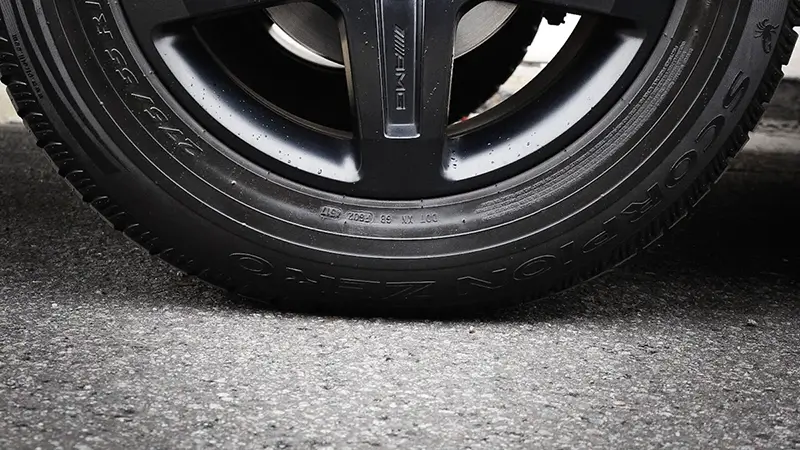
Best Practices for Proper Installation
Installing rubber mounts correctly ensures they perform as intended and extend the life of your equipment. Placement is key. You should position the mounts in areas that experience the most vibration. For instance, in vehicles, they often go between the engine and the frame. In machinery, they are typically placed under the equipment or at contact points with other surfaces. Strategic placement minimizes vibration transfer and protects both the equipment and its surroundings.
Before installation, inspect the mounting surface. It should be clean, flat, and free from debris. Uneven or dirty surfaces can compromise the mount’s effectiveness. Use the appropriate tools to secure the mounts firmly. Over-tightening can damage the rubber, while loose mounts may shift under load, reducing their ability to isolate vibrations.
Pro Tip: Always follow the manufacturer’s guidelines for installation. These instructions often include specific torque settings or alignment recommendations to ensure optimal performance.
When installing multiple mounts, distribute the load evenly. Uneven weight distribution can cause some mounts to bear more stress than others, leading to premature wear. If you’re unsure about the correct placement or alignment, consult a professional or refer to the equipment’s manual.
Maintenance Strategies to Maximize Performance
Regular maintenance keeps your rubber mounts in top condition and prevents unexpected failures. Start by inspecting them periodically. Look for signs of wear, such as cracks, deformation, or separation from metal components. These issues indicate that the mounts may need replacement. Pay attention to any changes in the equipment’s vibration levels, as this could signal a problem with the mounts.
Cleaning the mounts is another essential step. Dirt, oil, and debris can accumulate over time, accelerating wear. Use a mild cleaner to remove buildup without damaging the rubber. Avoid harsh chemicals that could degrade the material.
Quick Reminder: Some mounts may require additional upkeep, like tightening bolts or applying lubrication. Check the maintenance requirements specific to your mounts to ensure they stay effective.
Preventive maintenance saves money and reduces downtime. Replacing worn mounts before they fail avoids costly repairs to your equipment. It also ensures consistent performance, keeping your operations running smoothly. By staying proactive, you’ll extend the lifespan of your mounts and maintain their vibration-dampening properties.
Common Mistakes to Avoid When Choosing Rubber Mounts
Selecting the right rubber mounts is essential for ensuring your equipment operates efficiently and lasts longer. However, many people make avoidable mistakes during the selection process. Let’s explore two common pitfalls and how you can steer clear of them.
Overlooking Load and Vibration Requirements
One of the biggest mistakes is failing to account for the load and vibration characteristics of your equipment. Every rubber mount has a specific load capacity, which determines how much weight it can support effectively. If you underestimate the load, the mounts may fail prematurely, leading to instability or even damage to your machinery. On the other hand, overestimating the load could result in mounts that are too stiff, reducing their ability to isolate vibrations.
Vibration requirements are equally important. Machines generate vibrations at different frequencies, and the mounts need to match these frequencies to dampen them effectively. Ignoring this can lead to excessive noise, wear, and even structural damage over time. For instance, softer mounts work well for high-frequency vibrations, while stiffer mounts are better suited for heavy machinery with occasional shocks.
Quick Tip: Always calculate the total weight of your equipment and divide it by the number of mounts you plan to use. Then, choose mounts with a slightly higher load capacity to account for safety margins. Don’t forget to match the mount’s vibration isolation properties to your machine’s specific needs.
Ignoring Environmental Factors
Another common oversight is neglecting the environmental conditions where the mounts will operate. Temperature, humidity, and exposure to chemicals can all impact the performance and lifespan of rubber mounts. For example, natural rubber performs well in moderate conditions but may degrade quickly in extreme heat or when exposed to oils and solvents. In contrast, synthetic materials like neoprene or silicone offer better resistance to harsh environments.
Moisture and UV exposure can also weaken mounts over time. If your equipment operates outdoors or in wet conditions, you’ll need weather-resistant mounts to prevent water absorption and UV damage. Ignoring these factors can lead to cracks, sponginess, or even complete failure of the mounts, compromising the stability of your equipment.
Pro Insight: Always check the material specifications of the mounts before purchasing. Synthetic options like neoprene or polyurethane often outperform natural rubber in challenging environments, ensuring better durability and efficiency.
By avoiding these common mistakes—overlooking load and vibration requirements and ignoring environmental factors—you can make smarter choices. This ensures your rubber mounts deliver optimal performance and protect your equipment for years to come.
Choosing the right rubber mounts is essential for your equipment’s performance and durability. By understanding load capacity, vibration isolation, and environmental conditions, you can make smarter decisions that protect your machinery and improve efficiency. A structured selection process ensures you avoid costly mistakes and achieve optimal results. For complex applications, consulting experts or using selection tools can simplify the process. Companies like Service Rubber Group offer reliable advice and custom solutions to meet your needs. Take the next step—explore your options or seek professional guidance to ensure your equipment operates at its best.


